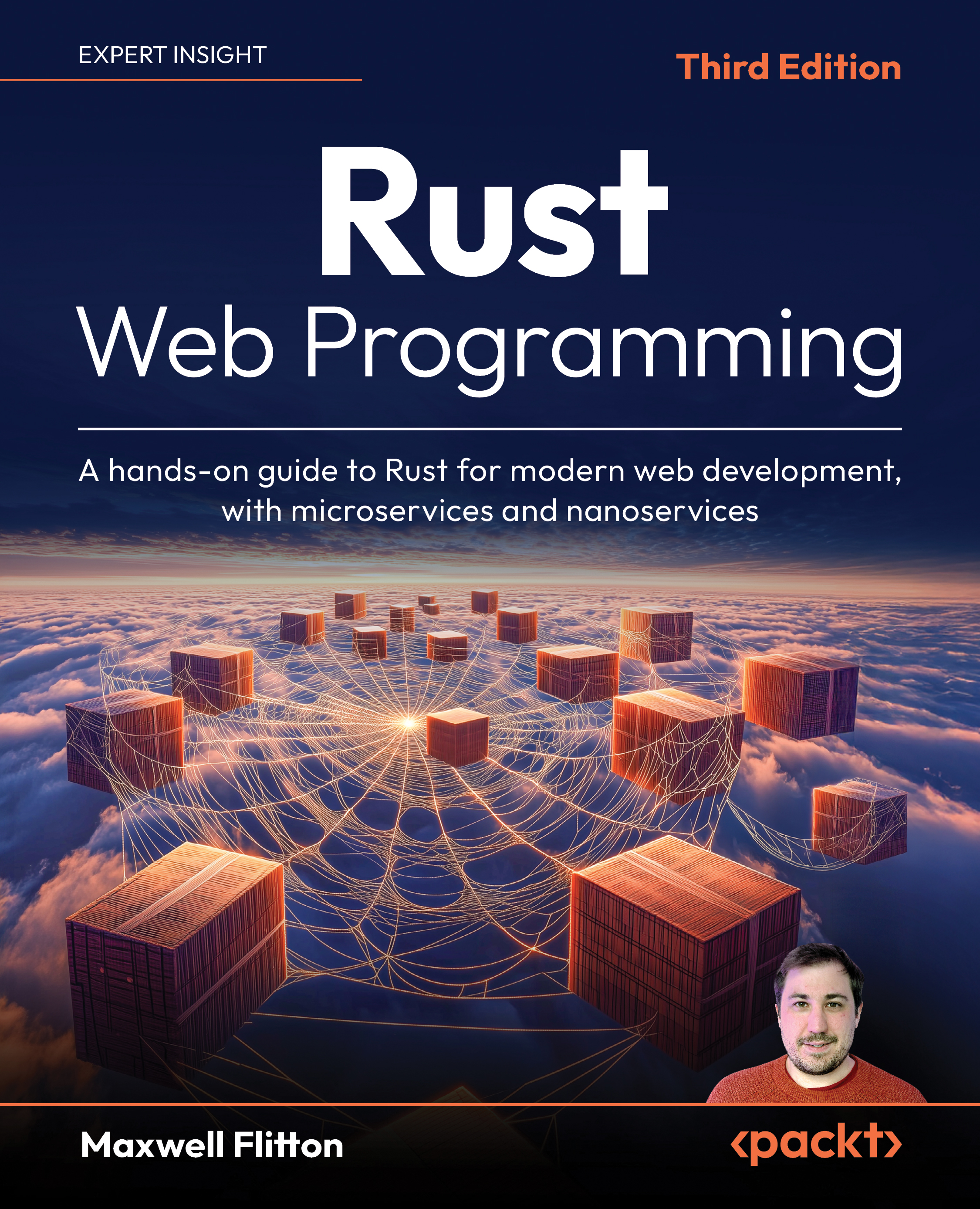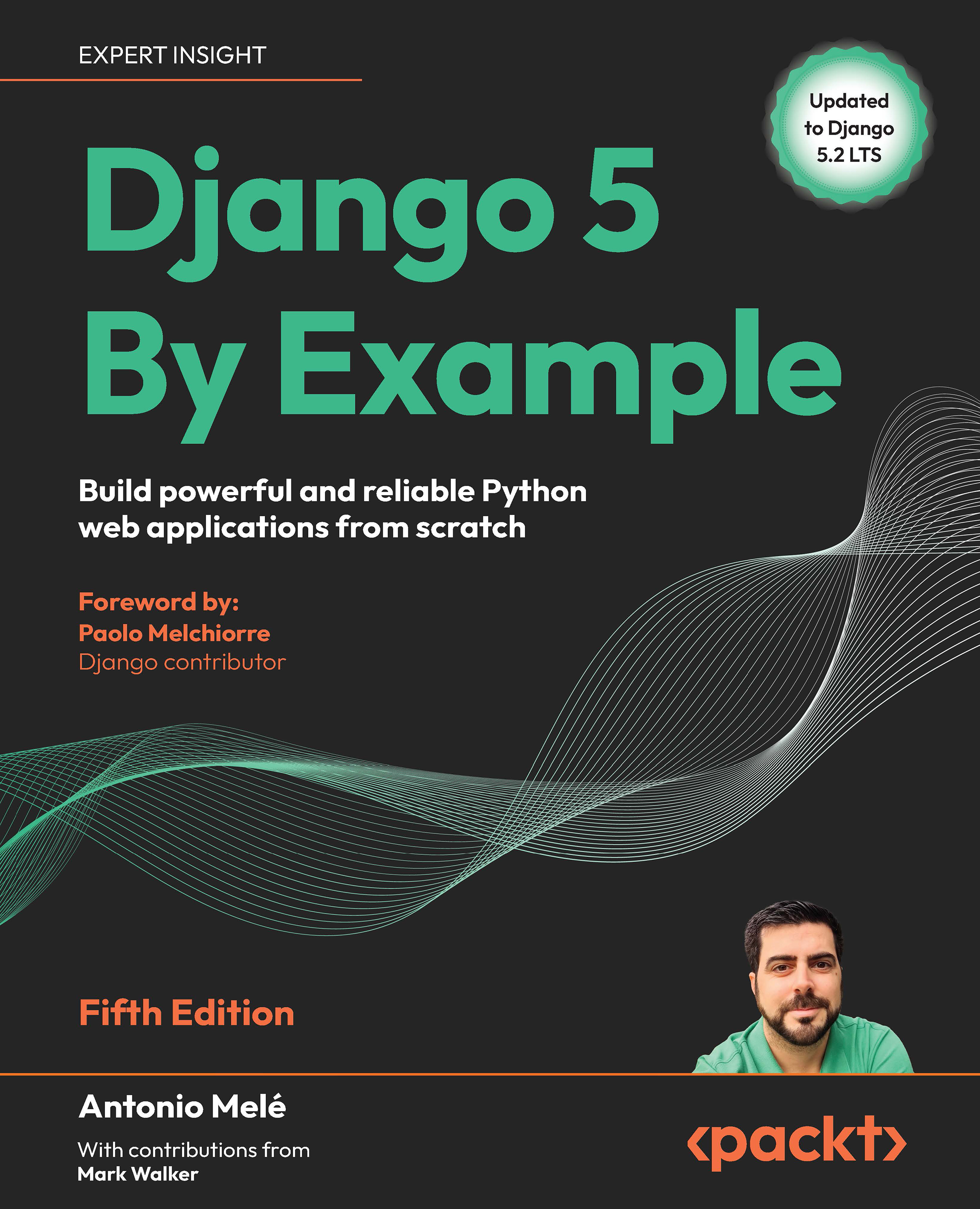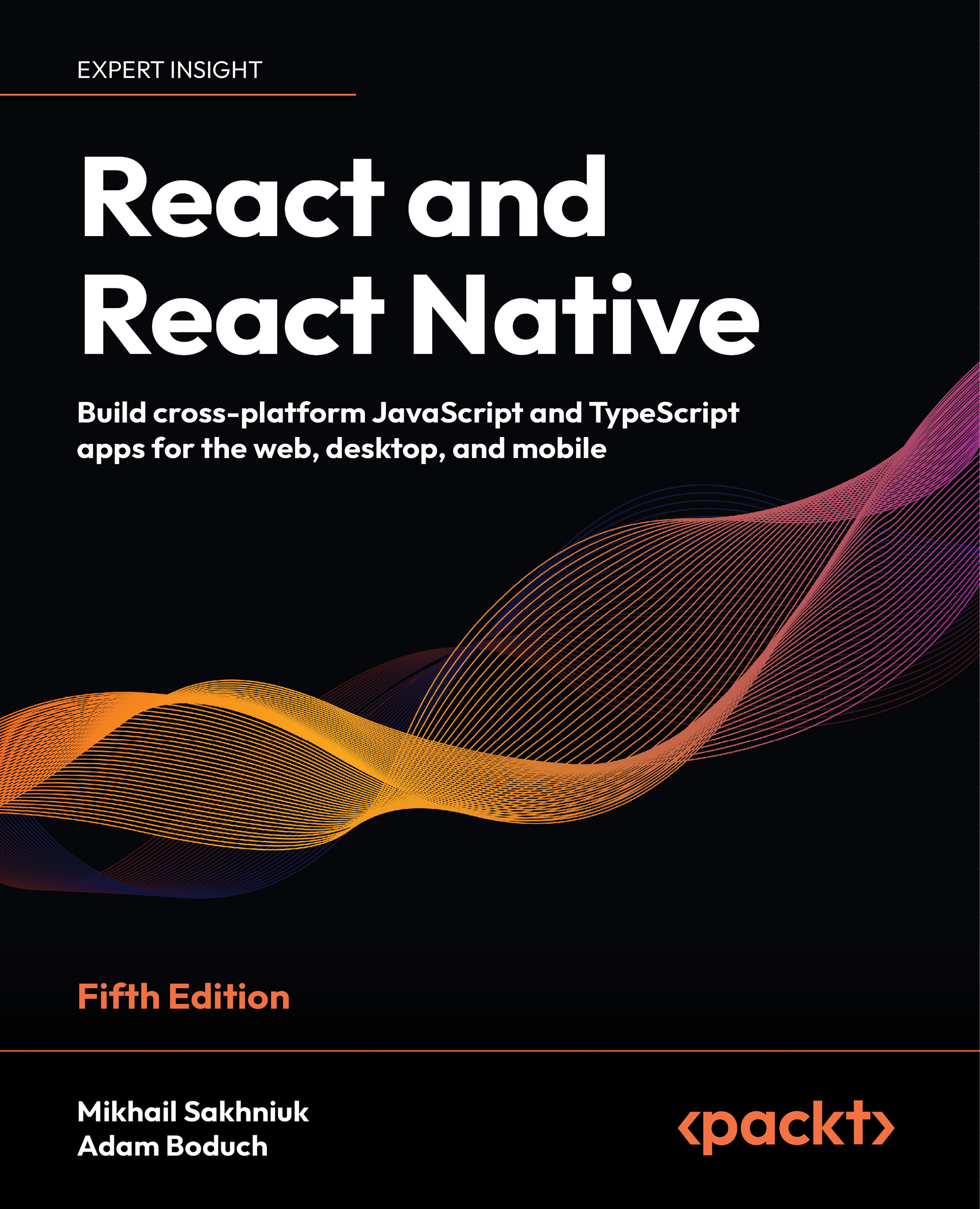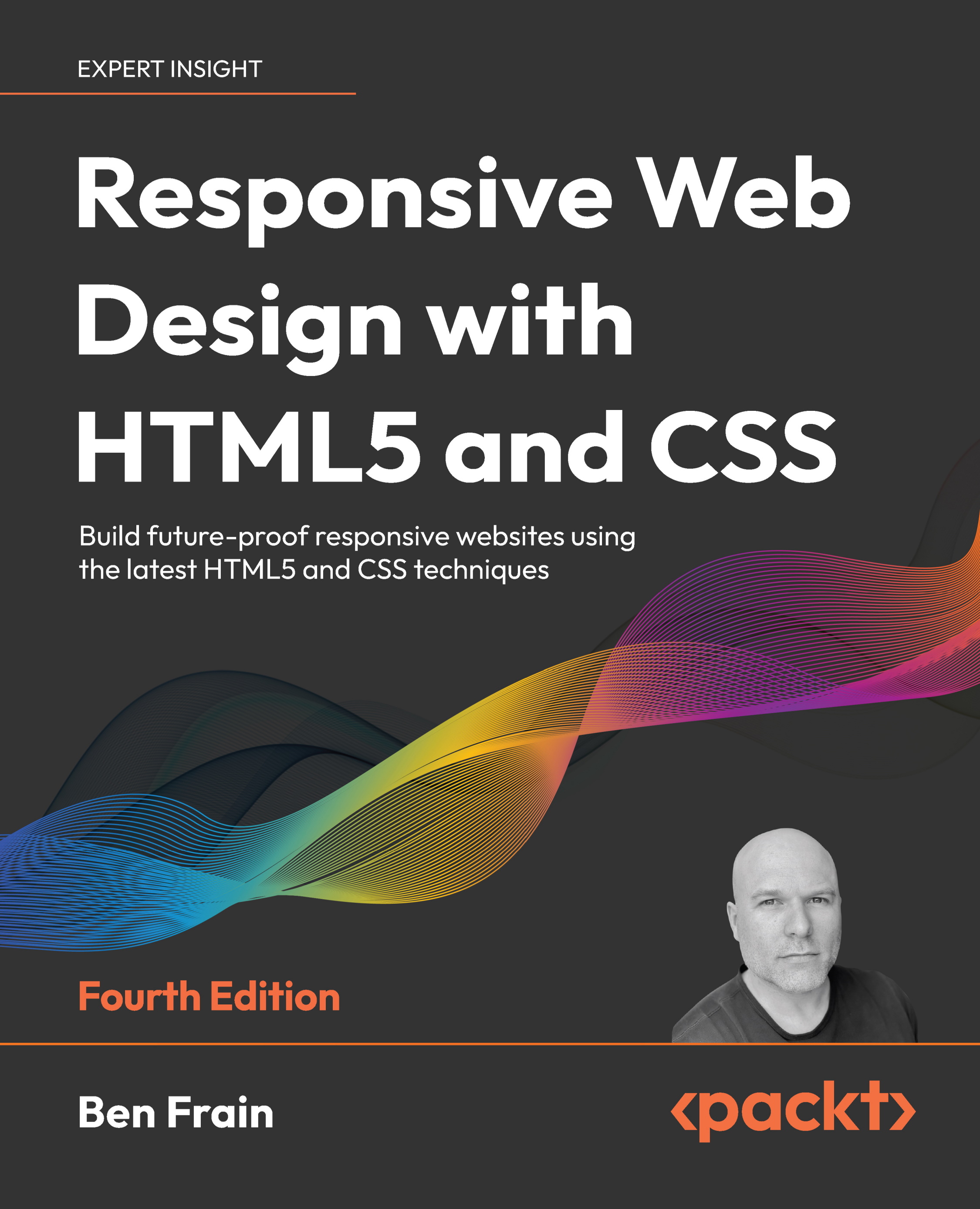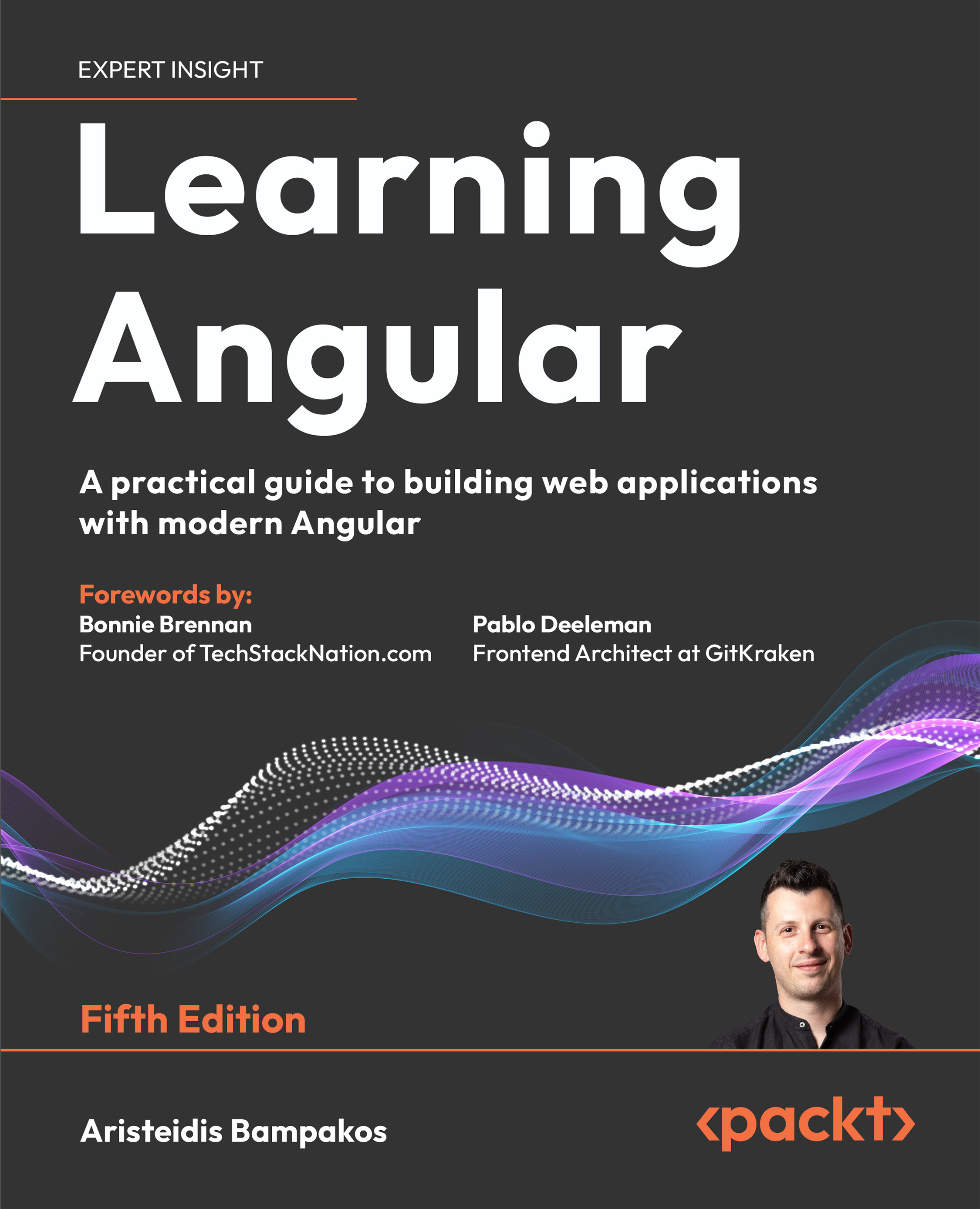 Early Access
Early Access
Publishing in
Sep 2025
€18.99
per month
Paperback
Sep 2025
733 pages
3rd Edition
-
Get a comprehensive introduction to Rust for full-stack web development
-
Explore the exciting evolution of Rust in recent years with WebAssembly, Axum, native TLS, and SurrealDB
-
Build code in a scalable way with microservice and nanoservice design patterns
Rust is no longer just for systems programming. This book will show you why this safe and performant language is a crucial up-and-coming option for developing web applications, and get you on your way to building fully functional Rust web apps. You don’t need any experience with Rust to get started, and this new edition also comes with a shallower learning curve.
You’ll get hands-on with emerging Rust web frameworks including Actix, Axum, Rocket, and Hyper. You’ll look at injecting Rust into the frontend with WebAssembly and HTTPS configuration with NGINX. Later, you’ll move onto more advanced async topics, exploring TCP and framing, and implementing async systems.
As you work through the book, you’ll build a to-do application with authentication using a microservice architecture that compiles into one Rust binary, including the embedding of a frontend JavaScript application in the same binary. The application will have end-to-end atomic testing and a deployment pipeline.
By the end of this book, you’ll fully understand the significance of Rust for web development. You’ll also have the confidence to build robust, functional, and scalable Rust web applications from scratch.
This book is for web developers who are looking to learn or adopt Rust to build safe and performant web applications. This includes developers familiar with languages such as Python, Ruby, and JavaScript.
You don’t need any prior experience in Rust to start this book. However, you’ll need a solid understanding of web development principles, along with basic knowledge of HTML, CSS, and JavaScript to get the most out of it.
-
Build scalable Rust web applications as monoliths or microservices
-
Develop a deeper understanding of async Rust
-
Get to grips with Rust language features like traits and the borrow checker
-
Manage authentication and databases in Rust web apps
-
Build app infrastructure on AWS using Terraform
-
Learn how to package and deploy Rust servers
-
Build unit tests and end-to-end tests for your Rust web apps with Python
 United States
United States
 Great Britain
Great Britain
 India
India
 Germany
Germany
 France
France
 Canada
Canada
 Russia
Russia
 Spain
Spain
 Brazil
Brazil
 Australia
Australia
 Singapore
Singapore
 Canary Islands
Canary Islands
 Hungary
Hungary
 Ukraine
Ukraine
 Luxembourg
Luxembourg
 Estonia
Estonia
 Lithuania
Lithuania
 South Korea
South Korea
 Turkey
Turkey
 Switzerland
Switzerland
 Colombia
Colombia
 Taiwan
Taiwan
 Chile
Chile
 Norway
Norway
 Ecuador
Ecuador
 Indonesia
Indonesia
 New Zealand
New Zealand
 Cyprus
Cyprus
 Denmark
Denmark
 Finland
Finland
 Poland
Poland
 Malta
Malta
 Czechia
Czechia
 Austria
Austria
 Sweden
Sweden
 Italy
Italy
 Egypt
Egypt
 Belgium
Belgium
 Portugal
Portugal
 Slovenia
Slovenia
 Ireland
Ireland
 Romania
Romania
 Greece
Greece
 Argentina
Argentina
 Netherlands
Netherlands
 Bulgaria
Bulgaria
 Latvia
Latvia
 South Africa
South Africa
 Malaysia
Malaysia
 Japan
Japan
 Slovakia
Slovakia
 Philippines
Philippines
 Mexico
Mexico
 Thailand
Thailand
